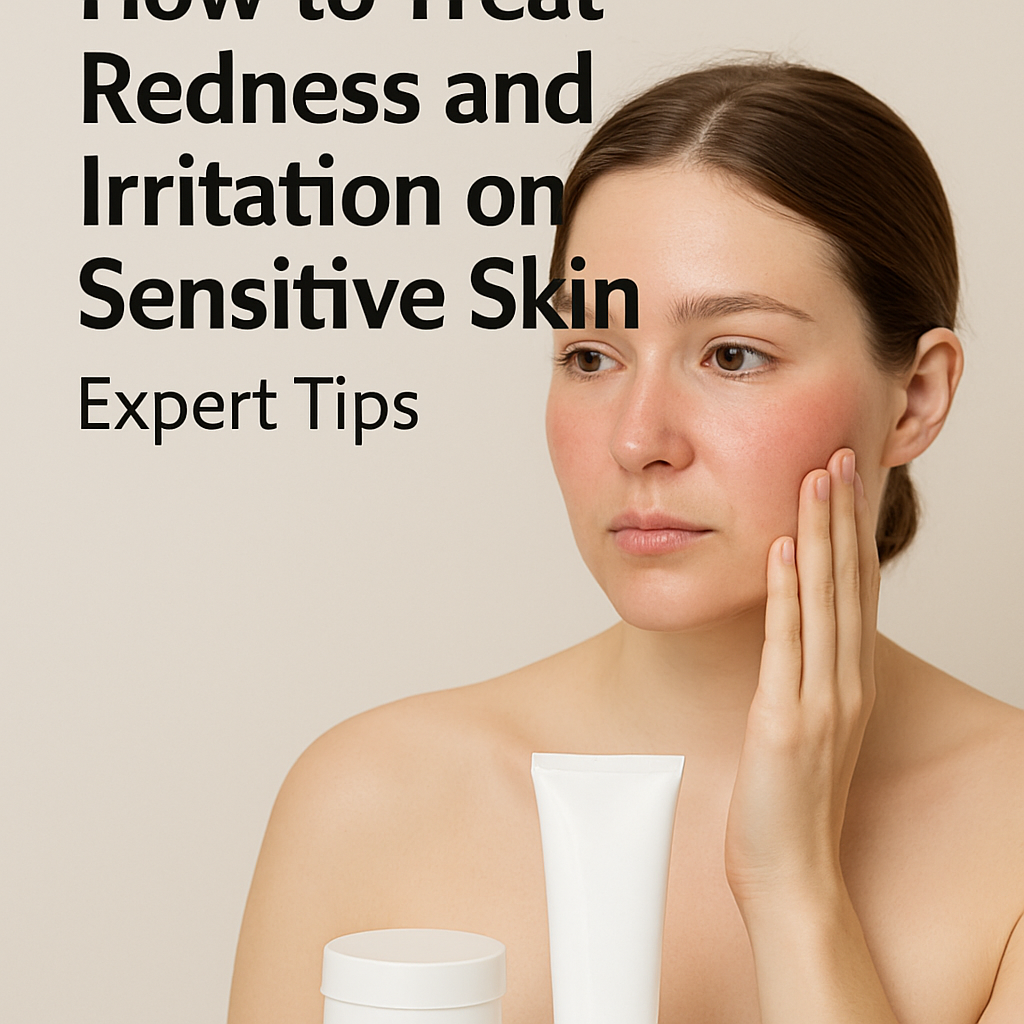How to Treat Redness and Irritation on Sensitive Skin: Expert Tips
Redness, irritation, and discomfort are all too common for people with sensitive skin. Whether caused by environmental triggers, allergic reactions, or improper product use, these symptoms are not only frustrating but often hard to manage without proper guidance.
In this expert guide, we’ll explain the main causes of redness and irritation, how to soothe them quickly, and how to build a skincare routine that helps prevent flare-ups in the future.
Understanding Redness and Irritation
Sensitive skin reacts more easily to external factors like temperature changes, ingredients, friction, or stress. Redness typically results from increased blood flow to the skin’s surface in response to inflammation or damage. Irritation may appear as itching, burning, tightness, or even a stinging sensation.
Common causes include:
- Harsh cleansers or exfoliants
- Fragrances and alcohols in skincare
- Over-exfoliation (both physical and chemical)
- Weather extremes (cold wind, sun exposure)
- Allergic contact dermatitis
- Compromised skin barrier
If your skin is red, blotchy, or reactive more often than not, it likely needs a gentler, more supportive routine focused on calming and protecting.
First Aid for Irritated Skin
When flare-ups happen, acting fast with the right calming steps can minimize damage. Here’s what dermatologists recommend:
1. Stop All Actives
Immediately discontinue any products with acids (AHAs/BHAs), retinol, or exfoliants. These will worsen sensitivity during an irritation episode.
2. Use Cold Compresses
Apply a clean, damp, chilled cloth to the affected area for 10–15 minutes to reduce inflammation.
3. Switch to a Bland Skincare Routine
Use only fragrance-free, non-comedogenic, hypoallergenic products. Keep your routine minimal—cleanser, moisturizer, SPF.
4. Avoid Makeup
Let your skin breathe during flare-ups. If makeup is necessary, opt for mineral-based foundations with soothing ingredients like zinc oxide.
5. Choose Barrier-Rebuilding Products
Ingredients like ceramides, panthenol (vitamin B5), centella asiatica, and colloidal oatmeal help strengthen and repair the skin barrier.
Calming Ingredients to Look For
The key to managing sensitive skin lies in ingredient selection. Here are some of the most effective soothing agents:
- Aloe Vera – Naturally calming and hydrating.
- Colloidal Oatmeal – Reduces inflammation and relieves itching.
- Centella Asiatica – Promotes healing and soothes irritation.
- Panthenol – Moisturizing and anti-inflammatory.
- Madecassoside – A compound derived from Centella, excellent for calming redness.
- Allantoin – Helps reduce irritation and supports skin repair.
- Licorice Root Extract – Helps fade redness and discoloration.
Avoid essential oils, synthetic fragrance, menthol, and drying alcohols, which are common culprits in irritation.
Long-Term Skincare Strategy for Redness-Prone Skin
Once the immediate symptoms are managed, consistency is key. Sensitive skin thrives with routines that are:
- Minimalist – Fewer ingredients and steps reduce risk of reaction.
- Balanced – Supports both hydration and barrier repair.
- Protective – Includes daily SPF use and defense against pollution.
Step-by-step approach:
- Cleanse: Use a non-foaming, pH-balanced cleanser.
- Hydrate: Apply a moisturizer with ceramides and panthenol.
- Calm: Use a serum or cream with Centella Asiatica or oatmeal.
- Protect: Use a mineral sunscreen (zinc oxide or titanium dioxide).
Lifestyle Adjustments for Better Skin Comfort
Skincare alone won’t eliminate sensitivity. Pay attention to:
- Diet: Reduce spicy foods, alcohol, and processed sugar. Add omega-3s.
- Stress: Practice mindfulness or breathing techniques; stress worsens inflammation.
- Air Quality: Use a humidifier indoors and avoid smoke exposure.
- Sleep: Aim for 7–9 hours to allow for skin regeneration.
When to See a Dermatologist
Persistent redness and irritation might indicate conditions like rosacea, eczema, or seborrheic dermatitis. If symptoms don’t improve within a few weeks of using gentle products, seek professional advice.
Internal Links
Throughout the article, добавим перелинковку на:
- Sensitive Skincare Routine
- Best Moisturizers for Sensitive Skin
- Anti-Aging Skincare for Sensitive Skin
Redness and irritation are common challenges for people with sensitive skin, but they don’t have to be chronic. With a calm, barrier-focused approach and the right ingredients, your skin can feel soothed, stronger, and more resilient over time. Focus on consistency, simplicity, and professional-grade soothing ingredients, and always be ready to scale back when flare-ups strike.

